An Overview of the Hatha Yoga Postures from the Arhanta Yoga Foundational Class
The following yoga asanas for beginners was compiled by Arhanta Yoga based on the teachings of Swami Sivananda. He was one of the most famous Indian spiritual leaders. Swami Sivananda (1887-1963) lived most of his life in Rishikesh, India. He was a medical doctor who gave up his career in medicine. He then devoted his life to Yoga and the spreading of Yoga. The original sequence of Swami Sivananda consists of 12 yoga exercises or asanas. Each one of these asanas stimulates a certain chakra, starting from the Crown Chakra (Sahastrara Chakra) to the Navel chakra (Svadhishthana Chakra).
Classical Hatha Yoga Asanas Versus Modern Yoga Asanas
Arhanta Yoga follows the tradition of Swami Sivananda but has added five yoga poses to this series. This has created a more complete yoga practice. The yoga exercises in this sequence are traditional Hatha Yoga asanas. The main difference between classical yoga asanas and modern yoga asanas is that classical postures work on the internal organs. They aim to keep the body healthy by stimulating and balancing the functions of the organs and glands.
On the other hand, modern yoga asanas help develop muscles and flexibility. The purpose of practicing yoga has changed over the years. In the beginning, it was the health of the body; today, it is the appearance. In addition, you can also read an article by Yogi Ram that answers the question: How do I practice asanas according to classical principles?
The Structure of a Classical Hatha Yoga Class
The yoga poses explained below don’t form a complete classical Hatha Yoga practice. In addition to yoga postures, a Hatha Yoga class includes moments of relaxation at the beginning and end of the class. After a short initial relaxation, the class always starts with breathing exercises like Kapalbhati (Skull-Shining Breath) and Anulom Vilom (Alternate Nostril Breathing). These breathing exercises help to clear the mind, improve concentration and allow the practitioner to experience the following asanas with more awareness. Therefore, it is imperative to warm up the body before starting asanas. Therefore, we always perform Sun Salutations. Optionally, you can add some extra warm-up exercises such as double leg raises or Dolphin Pose.
Yoga asanas are sequenced in such a way as to stimulate all the chakras, starting with the crown chakra in Headstand (Shirshasana) to the root chakra in Mountain Pose (Tadasana). To get the most out of yoga practice and to give your body rest after class, it is important to wind down with well-deserved and healing relaxation.
Yoga Exercises and Poses – Explanation and Pictures
Below you can find a detailed explanation of the yoga exercises for beginners. Step by step, all the asanas are explained and accompanied by some pictures for more clarity. Moreover, the benefits of each yoga pose are also explained to allow you to consciously experience each asana. In the explanation of the yoga exercises, you can find the common yoga mistakes and contraindications when practicing a pose.
These explanations can help you during your yoga practice at home. They can help yoga teachers prepare their yoga classes for beginners. A gentle warning for those who practice yoga at home; to prevent injuries it is advisable to practice some of the yoga poses with the guidance and assistance of a teacher. You will also need more than yoga exercises in order to solve a particular problem, such as insomnia. While each yoga pose affects a different part of your body, it is the combination of them that has an overall positive effect on you.
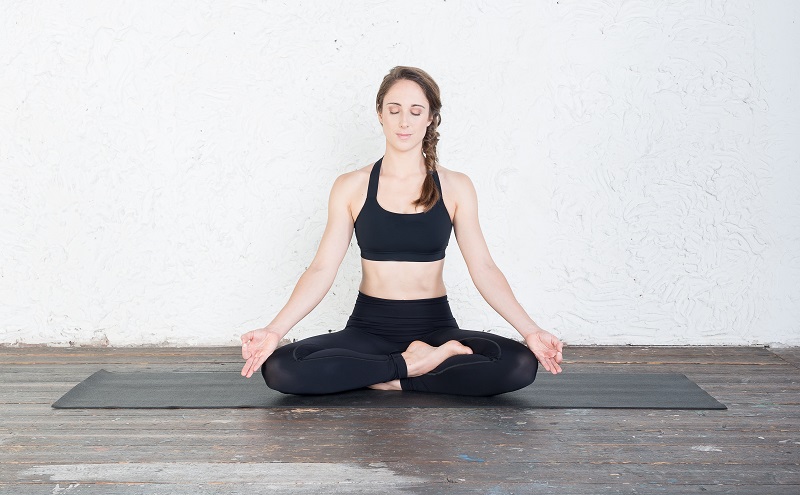
Kapalabhati - Skull Shining Breath
In Sanskrit kapal means “skull” and bhati means “shining.” Together they mean “shining skull.” Kapalabhati is considered to be so cleansing to the entire system that, when practiced on a regular basis, the face shines with good health and radiance. In fact, traditionally Kapalabhati is one of the six internal cleansing exercises (shat kriyas) rather than a form of pranayama. Even though it is traditionally classified as a cleansing exercise, Kapalbhati is an excellent breathing exercise to warm up the respiratory system and internally warm up your body in preparation for the following physical practice. It is an easier version of the pranayama Bhastrika and suitable for most levels of experience and fitness.
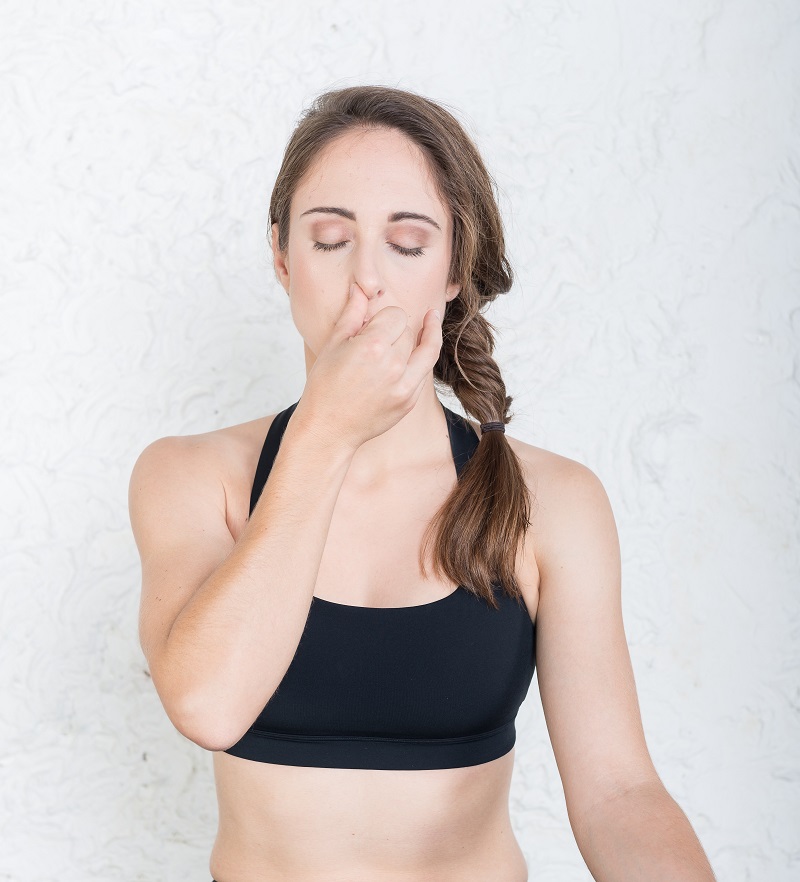
Anulom Vilom - Alternate Nostril Breathing
Anulom Vilom, also known as the alternate breathing technique, is excellent for respiratory problems and asthma. It facilitates proper functioning of the lungs, mitigates stress, lifts up your mood and keeps stress at bay.
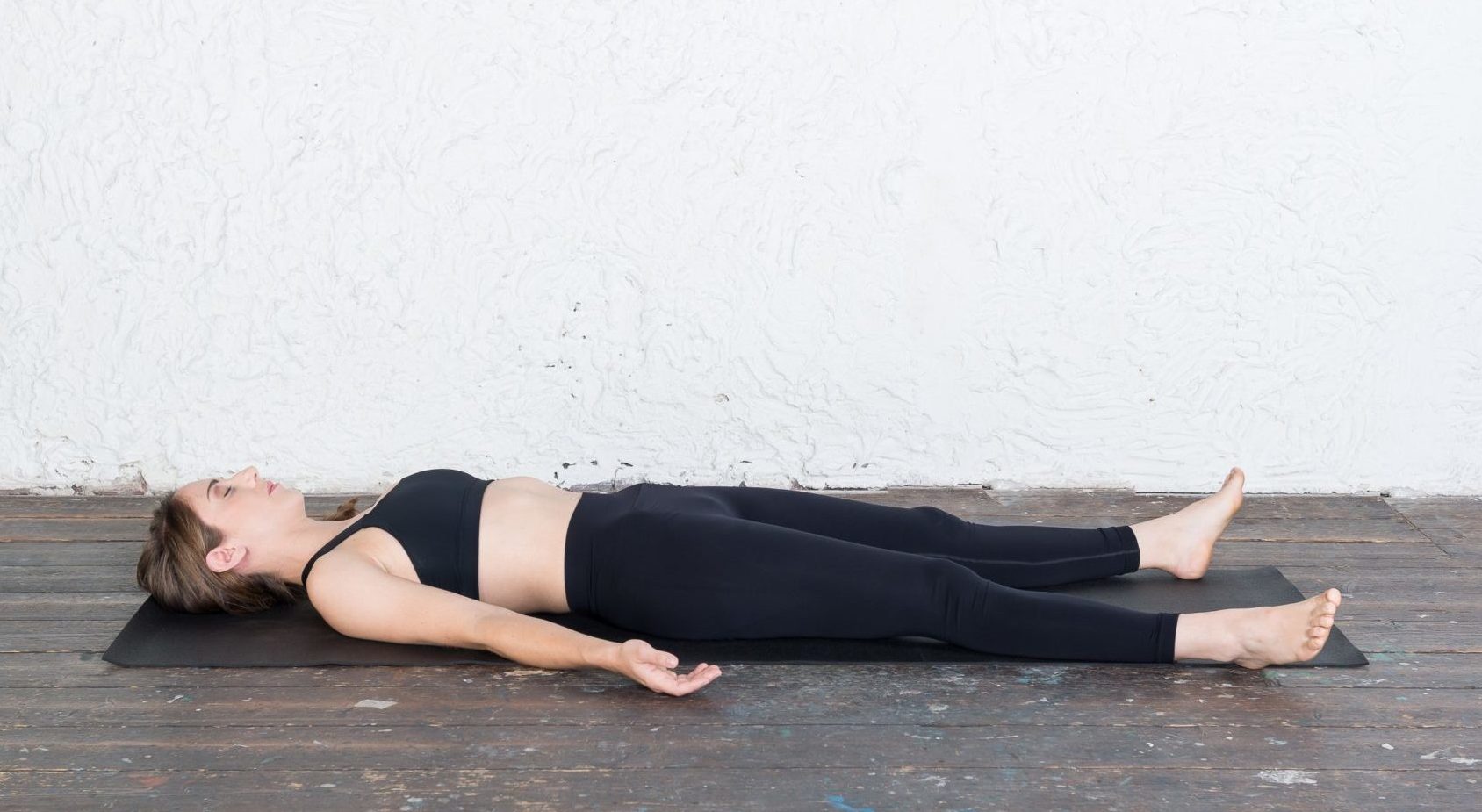
Shavasana - Corpse Pose
This is a rest or relaxation pose used at the beginning of the end of a yoga practice.
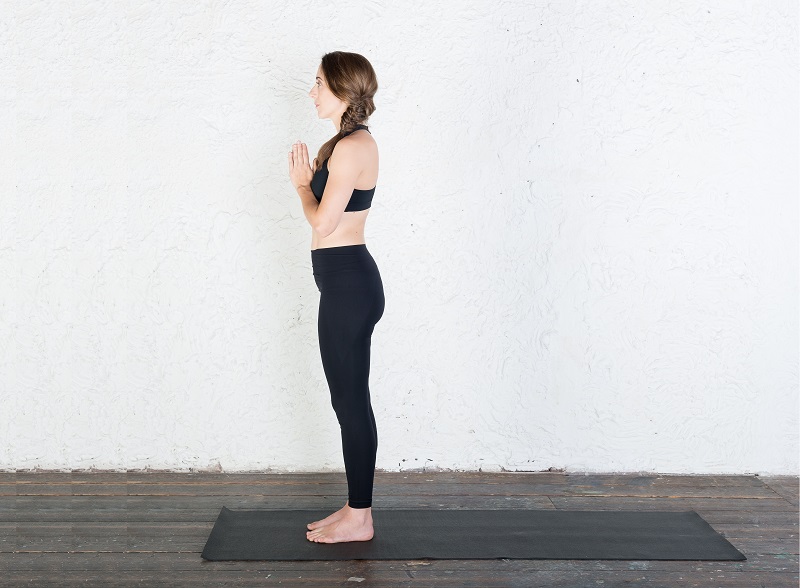
Sun Salutations – Surya Namaskar
The Sun Salutation is an ideal series of exercises to warm up the body in preparation for the upcoming yoga postures. Moreover, the fluid movements of the body in harmony with the breath help you to prepare mentally and to bring your focus on your body and your breath.
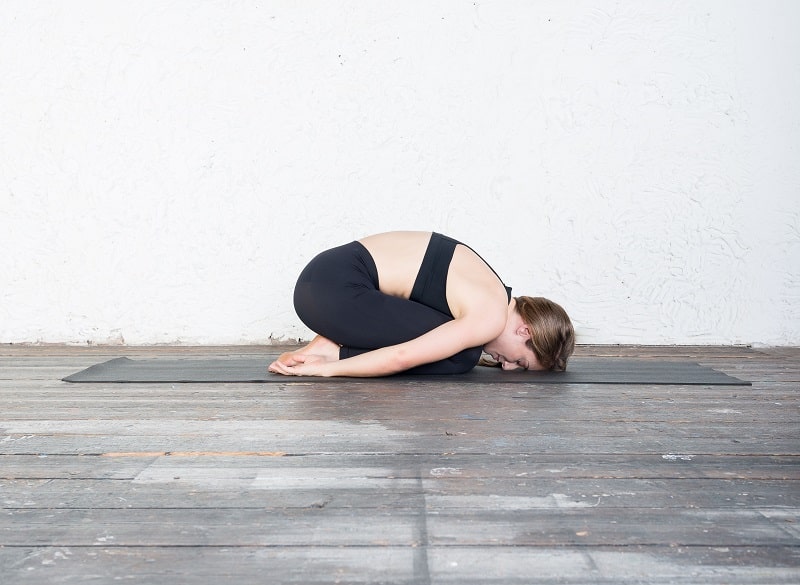
Shashankasana - Child’s Pose
This rest or relaxation pose is usually used before and after inversions and seated asanas.
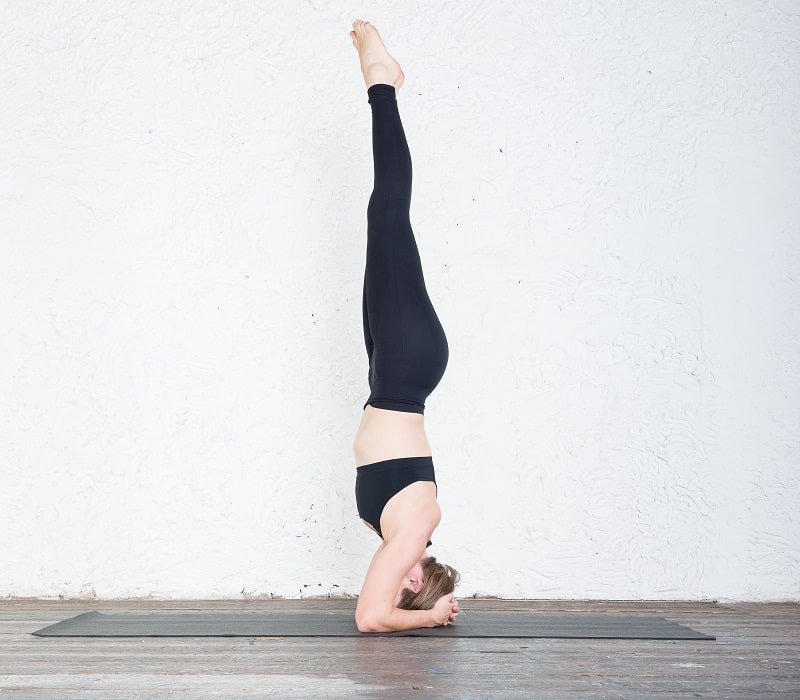
Headstand – Sirshasana
The Headstand is one of the most intensive and beneficial yoga poses because of the body’s inverted posture. Sirshasana, also known as the ‘King of asanas’, requires strength and balance but mainly concentration and body control.
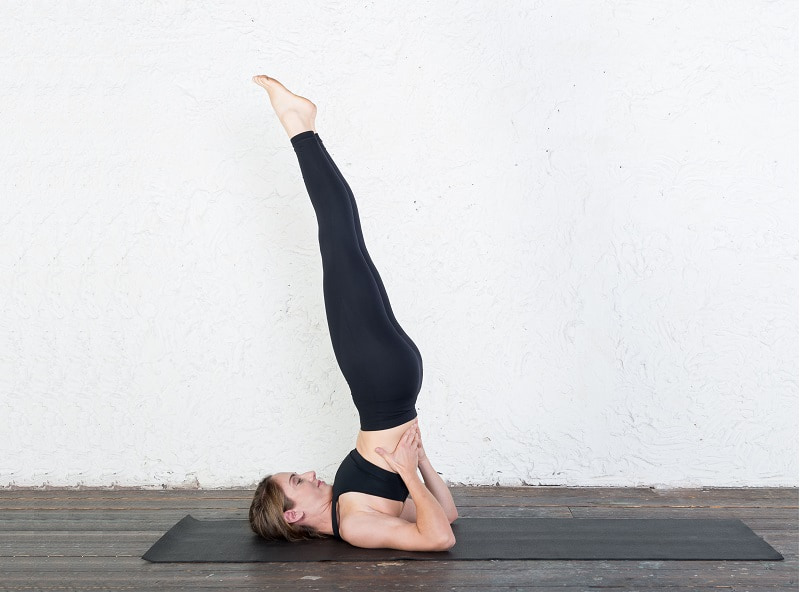
Shoulderstand – Sarvangasana
Shoulderstand is known as the ‘Queen of asanas’. This yoga pose stimulates the thyroid gland and as a consequence affects the entire body. Hence the name Sarvangasana, which literally means “all limbs pose”.
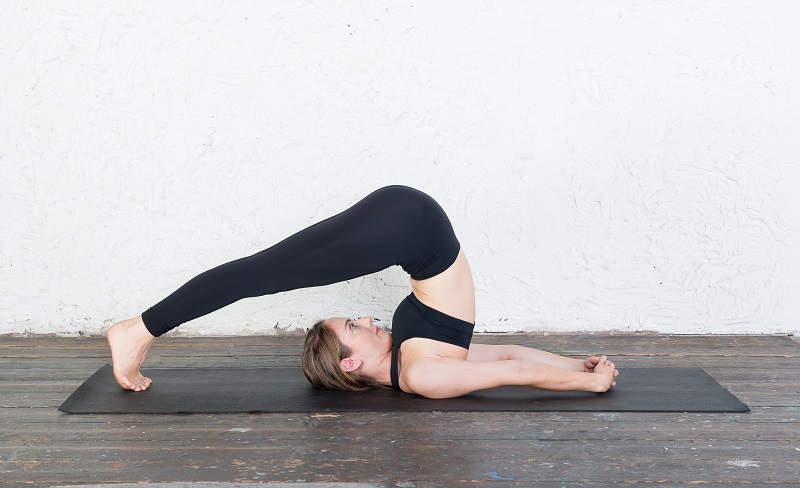
Plough Pose – Halasana
The Plough is a perfect posture to practice after the Candle because it continues the stimulation of the thyroid gland. Moreover this yoga exercise also works on the lower back and the hamstrings giving both body parts an intensive stretch. It is important to keep supporting the lower back with the hands until the feet can touch the floor comfortably.
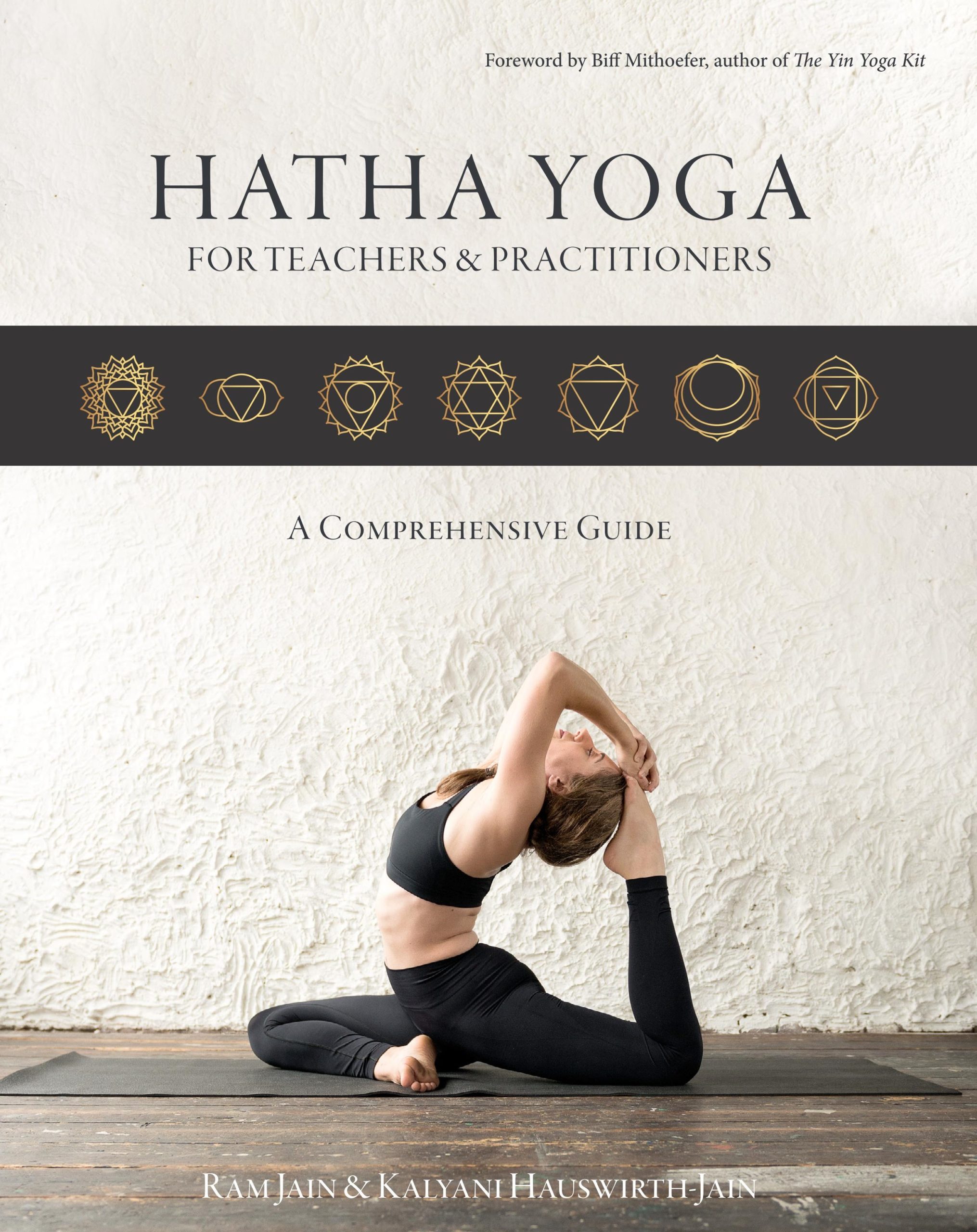
Get a free copy of our Amazon bestselling book directly into your inbox!
Learn how to practice, modify and sequence 250+ yoga postures according to ancient Hatha Yoga principles.
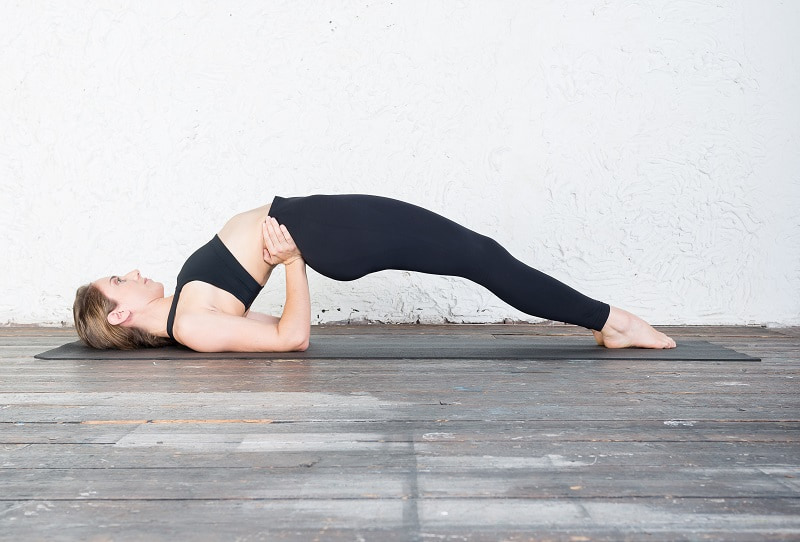
Half Bridge Pose - Ardha Setu Bandhasana
After compressing the chest in the Shoulder Stand and afterwards in the Plough, the Bridge is a commonly used counter pose to open the chest again. This yoga exercise stimulates the thyroid gland as well as the liver and the spleen.
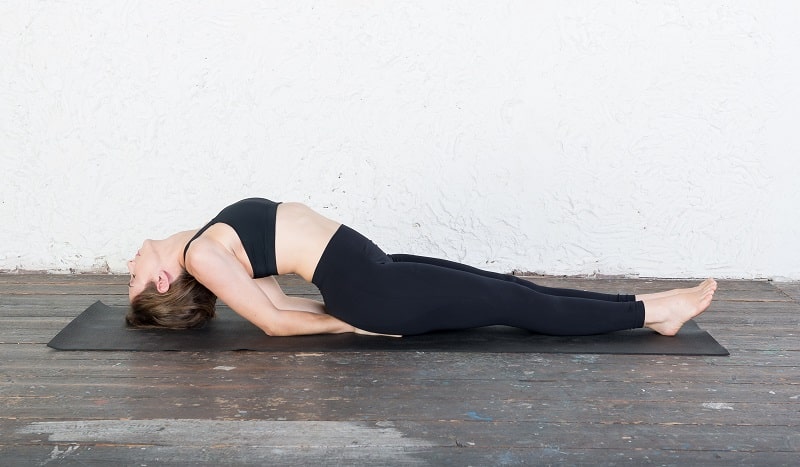
Fish Pose – Matsayasana
The Fish Pose provides a stretch to the neck and opens up the chest. This counter pose after the Candle stimulates the benefits of the previous postures. Deep yogic breathing is stimulated and with each inhalation the chest opens up more and more.
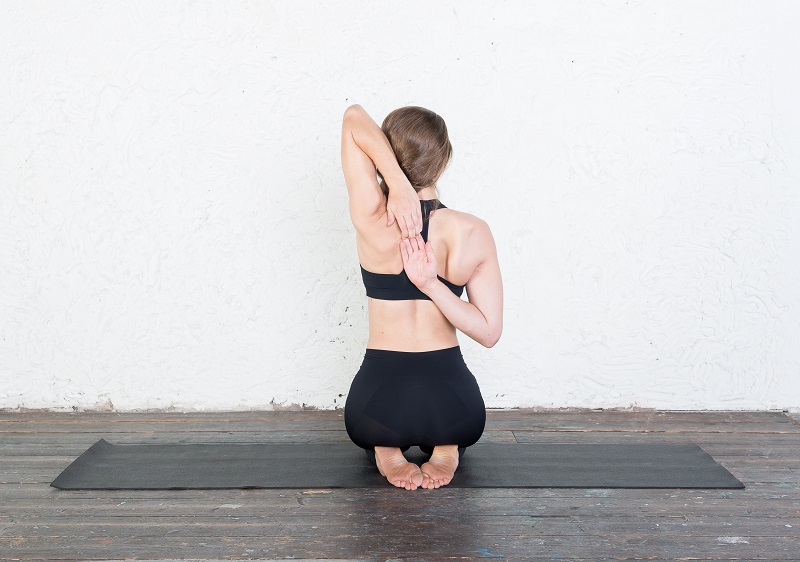
Easy Cow Face - Sukha Gomukhasan
The Cow Face improves flexibility of the shoulders and stimulates a good posture. This yoga exercise is especially beneficial to people who spend a lot of hours in front of the computer and have developed kyphosis (rounding of the upper back).
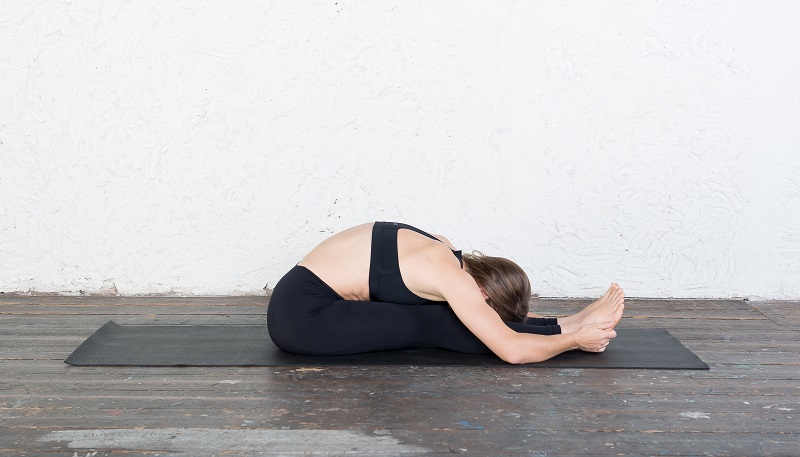
Seated Forward Bend – Paschimottanasana
The Seated Forward Bend or Seated Forward Fold stimulates the blood flow in the spine. The abdominal region is compressed and as a consequence the organs are stimulated and the digestion is improved.
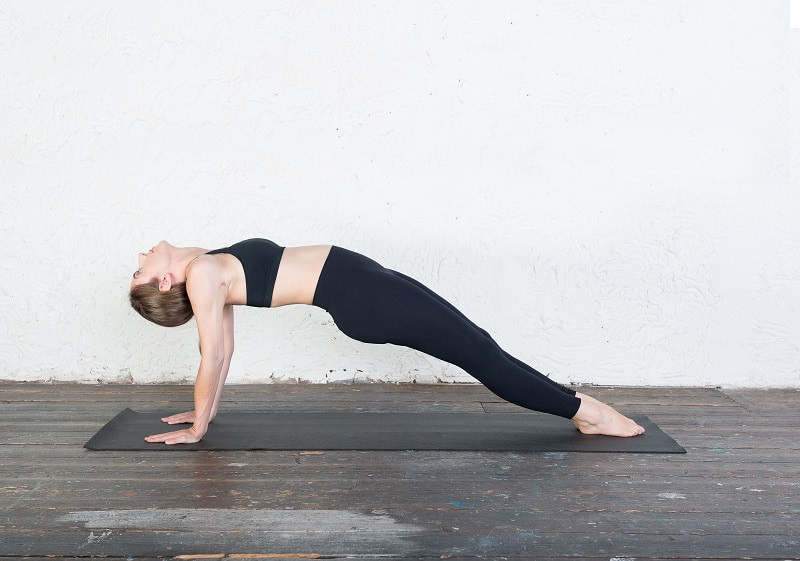
Inclined Plane – Purvottanasana
Inclined Plane is a very common yoga posture used as a counter pose after the Seated Forward Bend. This exercise opens the chest and strengthens the shoulders, arms and wrists.
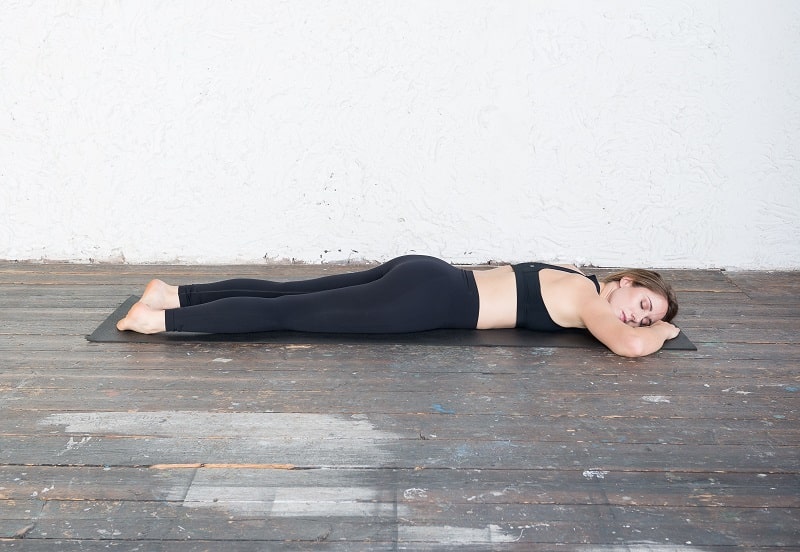
Makarasana - Crocodile Pose
Crocodile Pose (Makarasana) is a beginner yoga pose that relaxes the whole body and helps relieve pain related to other yoga poses or other activities.
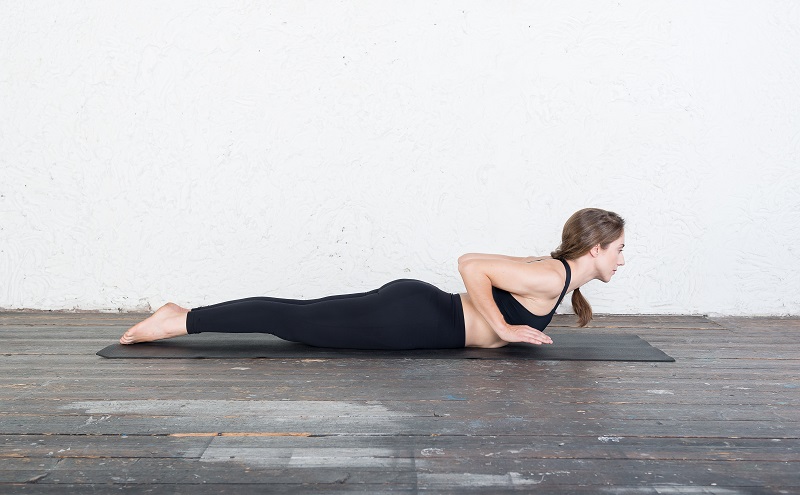
Cobra Pose – Bhujangasana
Cobra Pose is a very beneficial pose to strengthen the back muscles. Because the abdomen is pressed into the ground as you try to lift the upper body higher the organs as well as the digestive system is stimulated.
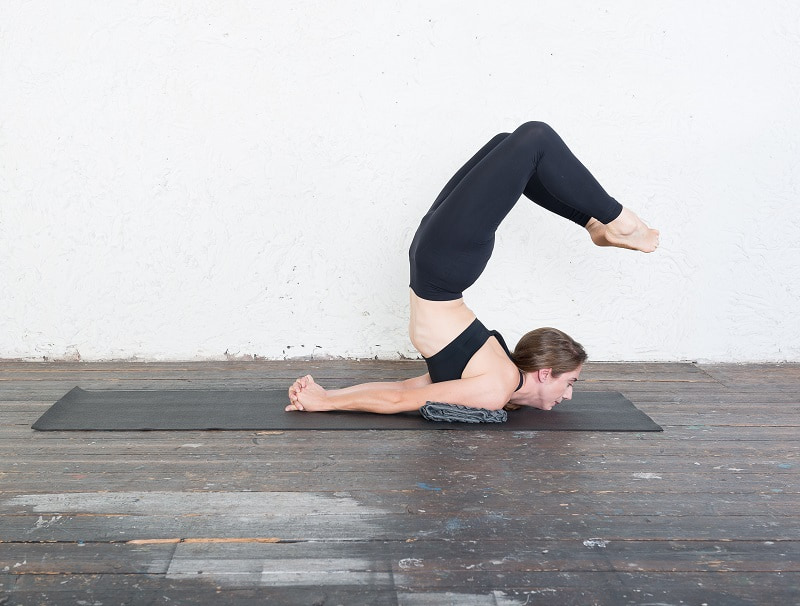
Locust Pose – Shalabhasana
The Locust Pose improves the flexibility in the neck and strengthens the lower back, the buttocks and the thighs. It also improves the blood flow in the abdominal region. It is important not to hold the breath when you are in the pose but to continue breathing naturally.
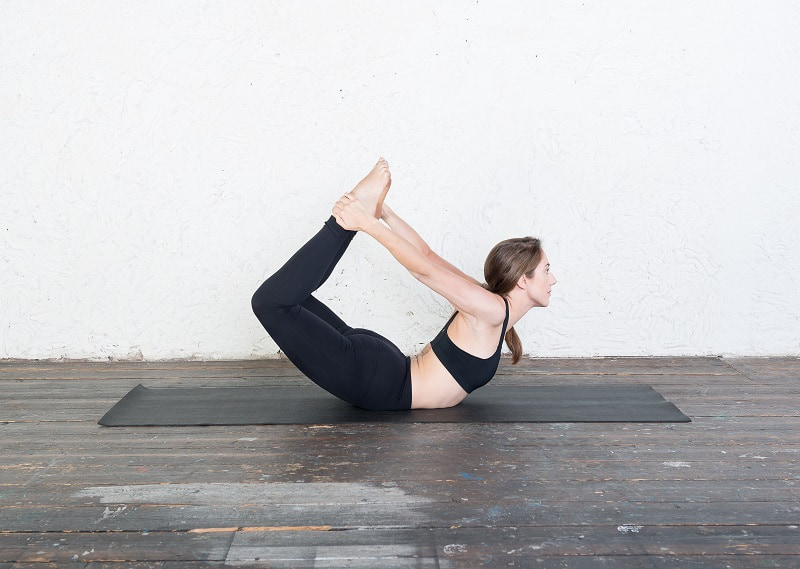
Bow Pose – Dhanurasana
Bow Pose is an intensive pose which is held maximum 10-20 seconds for beginners. This exercise improves the flexibility of the spine as well as the strength of the spine, the legs and the arms. It also helps to reduce excess belly fat.
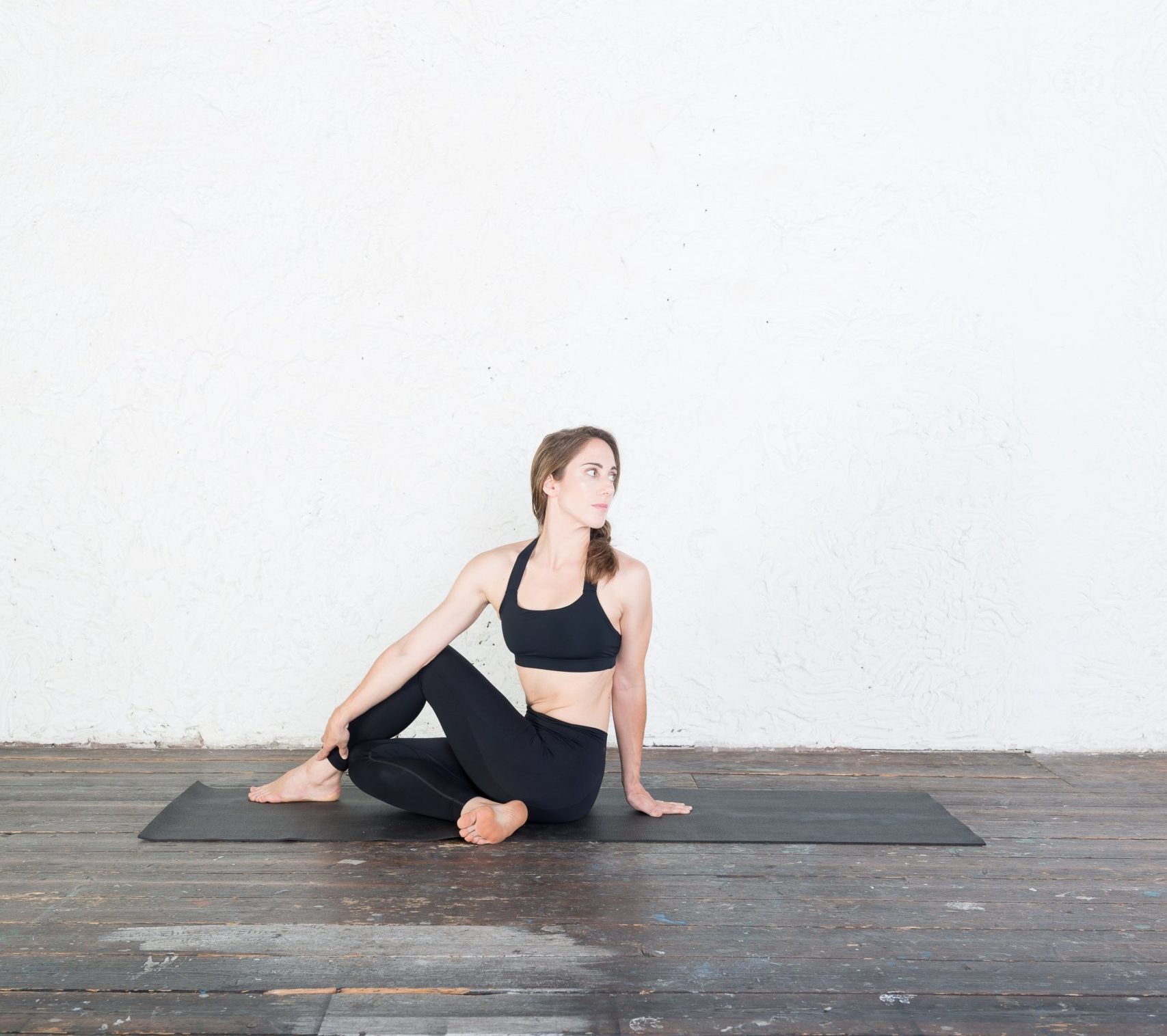
Ardha Matsyendrasana - Half Lord-of-the-Fishes Pose
This half-spinal twist has various benefits for the body when safely practiced.
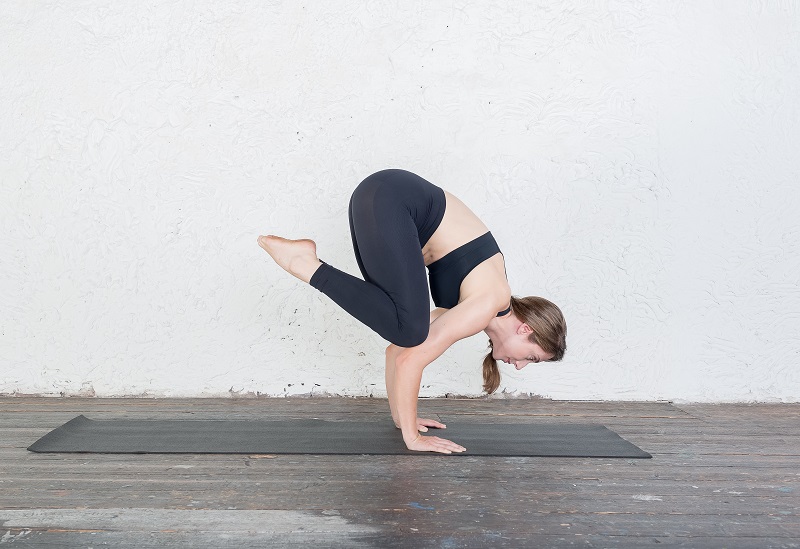
Easy Crow Pose - Sukha Kakasana
The Crow Pose improves concentration and balance and strengthens the wrists and arms.
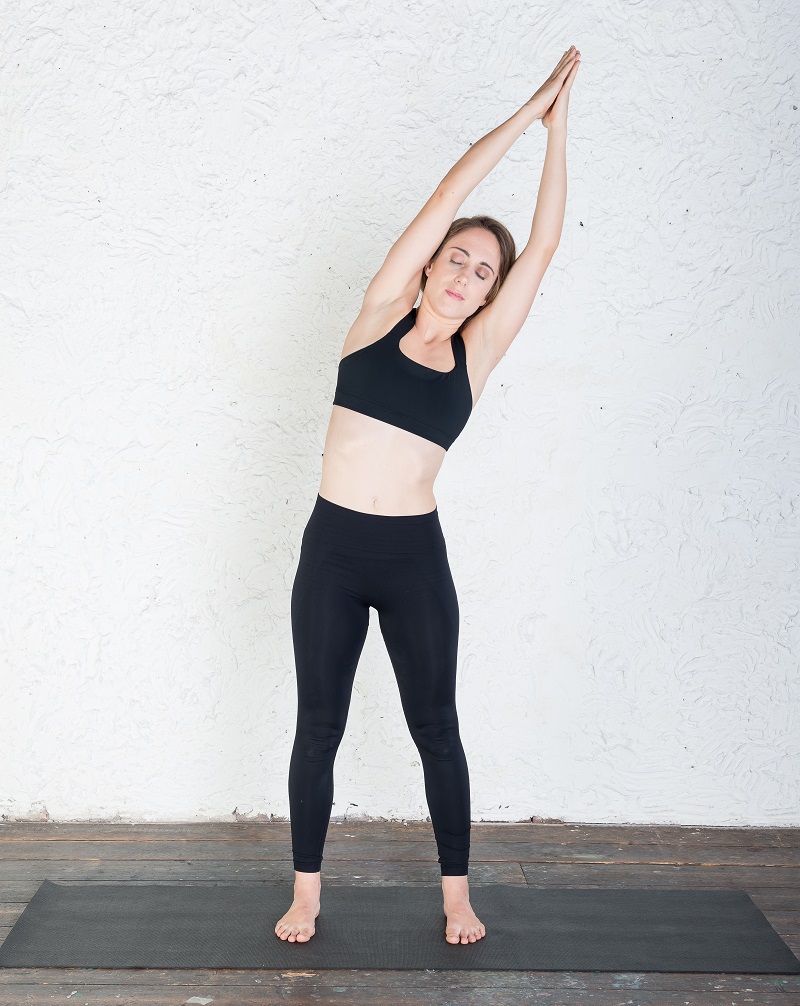
Classical Triangle Pose – Trikonasana
The first standing pose in this sequence is the Triangle Pose. This sideward asymmetric pose is very powerful and beneficial for both beginning and advanced yoga practitioners. It improves the flexibility of the spine, the hips and the legs.
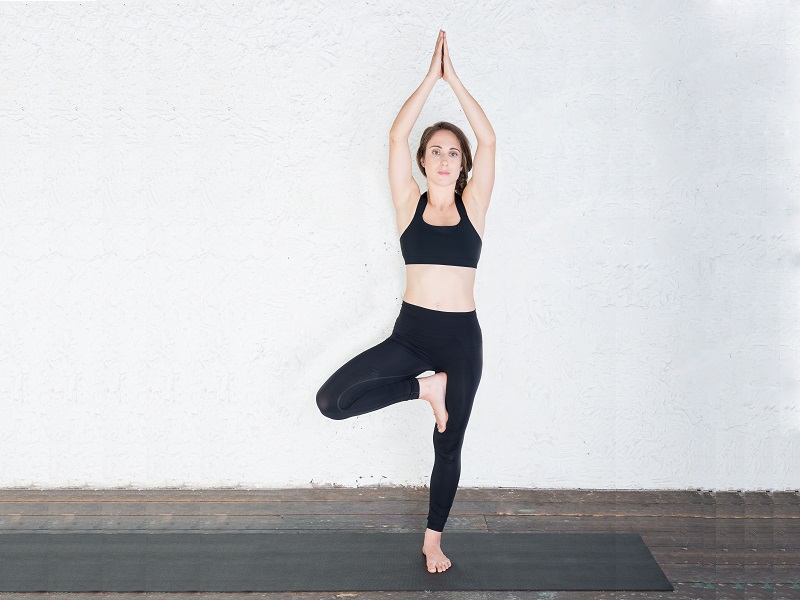
Tree Pose – Vrikshasana
The Tree Pose is a very popular pose which improves concentration and balance. This pose can only be held steadily when the mind is calm and focussed. For beginners it is advisable to keep the eyes open but advanced practitioners can also try to close the eyes.
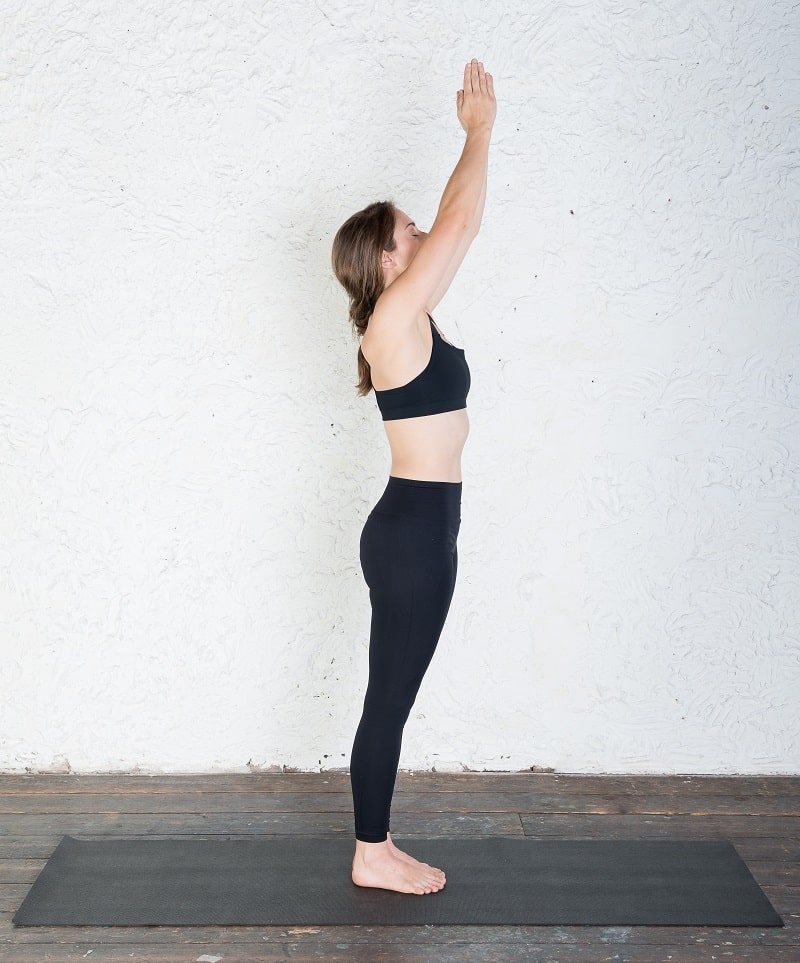
Mountain Pose – Tadasana
A Classical Hatha Yoga practice is usually concluded with the Mountain Pose. This pose gives a nice stretch to the spine and improves body posture and balance.

Get a free copy of our Amazon bestselling book directly into your inbox!
Learn how to practice, modify and sequence 250+ yoga postures according to ancient Hatha Yoga principles.
The Right Way to Practice Yoga Asanas
Before You Start – The Importance of Good Preparation
Just like in any other practice, also when you want to practice yoga, it is important to be properly prepared. Good preparation allows you to have a holistic and safe asana practice. Commonly, yoga practitioners don’t manage to have maximum benefit from their practice. This is due to the negligence of the following simple yet important factors:
1. Creating a Proper Environment
A proper environment and setting are very important and can have a big impact on the body and the mind during yoga asana practice. It can make the practice either more smooth or more difficult. It can affect the reaction of the body to the postures. And it can also affect the tension and stress of the body. The following aspects are important to consider when practising yoga asana:
When to Practice Asanas
Traditionally, yoga asanas were practised either during Brahmamoorta (sunset) or Sandhya (sunrise). At this time of the day, the energies are calm and the temperature is soft. Even though sunset and sunrise are the ideal times of the day to practice yoga asana, it can be done at any time of the day when you are not tired or sleepy. Another important thing to consider is not to practice asanas within two hours after the main course.
Choosing the Right Space to Practice
The space which you use for your asana practice is very important. Ideally, it should be an open, tidy space, free from any distraction. There should be enough space around the yoga mat and above the head. It is ideal if you can practice yoga in an open space like a garden or the beach. However, this is not possible for everybody at every time of the year. A good thumb rule for a proper practice space is that it should have enough natural light and be properly ventilated.
Setting the Correct Temperature
The temperature of the space you use affects the body and the mind. If it is too cold, the muscles can’t warm up enough and they remain tight. As a consequence, the mind becomes dull and lazy. If the body gets too much strain when in that condition, the chances of overload and injury increase. On the other hand, when the temperature is very hot, the muscles become loose and they easily get overloaded because you tend to push too much and go too far. The perfect temperature is not too warm and not too cold. Or, in simple terms, you should feel comfortable wearing a t-shirt without needing either a sweater or a fan. That is the ideal temperature for a yoga practice.
Wearing Suitable Clothing
Traditionally asanas were practised wearing only a Kaupinam, or rectangle linen practised cotton cloth tied around the hips and genitals. It is good to wear clothes made up of natural materials which allow the skin to breathe and perspire. The clothing should not be too tight and shouldn’t be made up of synthetic materials.
2. Physical Condition
Hatha Yoga postures should not be practised while you are severely sick. It is also better if you are not too tired. You could then use the wrong muscles during asanas which can lead to injuries. But adapted, more relaxed exercises can be healing if you practice them under the guidance of a competent teacher if you are chronically tired or sick. Asanas should be performed after emptying the intestines and on an empty stomach.
3. Mental Condition
According to Maharishi Patanjali, asanas should be performed with a mind free of longings, worries, anger or fear. For good practice, it is advised to have a calm and serene set of mind. Keep your goal in mind during practice and don’t worry about competition, approval or giving a show.
6 Principles on How to Prevent Injuries in Yoga
Even though yoga is considered to be a very safe practice, I have encountered many injuries during asana practice in my career as a teacher. Sometimes injuries take place due to an incompetent teacher and sometimes because of the mistakes of the practitioner himself. During the practice of asanas, the following principles should be respected in the back of the mind at all times. They are essential for sustainable health and well being concerning yoga practice. I would suggest every yoga teacher and yoga practitioner use them as the foundation of healthy and healing asana practice.
1. The Principle of Individual Difference
Just as every person and every mind is unique, similarly everyone responds differently to yoga, both on a physical and mental level. Motivation, coordination, endurance, physical and mental condition as well as body structure differ from person to person. These elements have a crucial influence on the effect of yoga practice on each individual. As a consequence, there is not one perfect alignment and duration of an asana which should be applied to every practitioner.
2. The Principle of Overload
According to this principle, the physical condition of the body improves by optimal overload. Therefore a yoga practitioner should exercise more tension or strain on his or her body than normal. This overload can be applied by increasing the duration of a pose or by increasing the difficulty of the asanas.
3. The Principle of Progression
This principle states that there is an optimal level of overload to be applied by each practitioner. If the overload is too intensive or applied too quickly, there is an increased risk of injury and decreased possibility for improvement. The thumb rule of progression implies that in the beginning, the extra load should be careful and gradual. If this is not the case, there is a high risk of overload and injury.
4. The Principle of Adaptation
According to this principle, the body adjusts predictably to the increased hold or complexity of the asanas. Through the repeated practice of the yoga poses, the body adjusts to the overload. When the practitioner feels comfortable with his/her yoga practice, it is time to adjust and modify the schedule to stay in line with the principle of overload. This will allow the practitioner to keep improving in strength, flexibility, balance and stability.
5. The Principle of Use and Disuse
The foundation of this principle is: “Use it or lose it”. It states that the body doesn’t remain in a stable condition; it will either improve or deteriorate. Whenever a yoga practice is abandoned, the gained strength, flexibility, balance and endurance will reduce. The overload should also be adjusted to the use and disuse of the body. When you take a break from your regular practice, it is important to adjust the practice level and improve it again.
6. The Principle of Rest
By giving the body rest, we allow it to break with the “stress response” and to take on the “relaxation response”. It is important to remember that the growth happens during the resting period. How often the body needs rest depends on the body type, health and the type of exercise. Therefore the ideal amount of rest varies from person to person.
More information
If you want to learn more about Classical Hatha Yoga, how to practice yoga and how to teach yoga, you can follow a yoga teacher training course with Arhanta Yoga. These intensive 4-week courses take place several times a year at the Arhanta Yoga Ashram in The Netherlands and the Arhanta Yoga Ashram in India. Do you want to learn more about how to practice (and teach) Hatha Yoga? Ram Jain’s book Hatha Yoga for Teachers & Practitioners is available as a paperback in your local book store or on Amazon. You can also purchase the E-book directly from our website.

Get a free copy of our Amazon bestselling book directly into your inbox!
Learn how to practice, modify and sequence 250+ yoga postures according to ancient Hatha Yoga principles.

